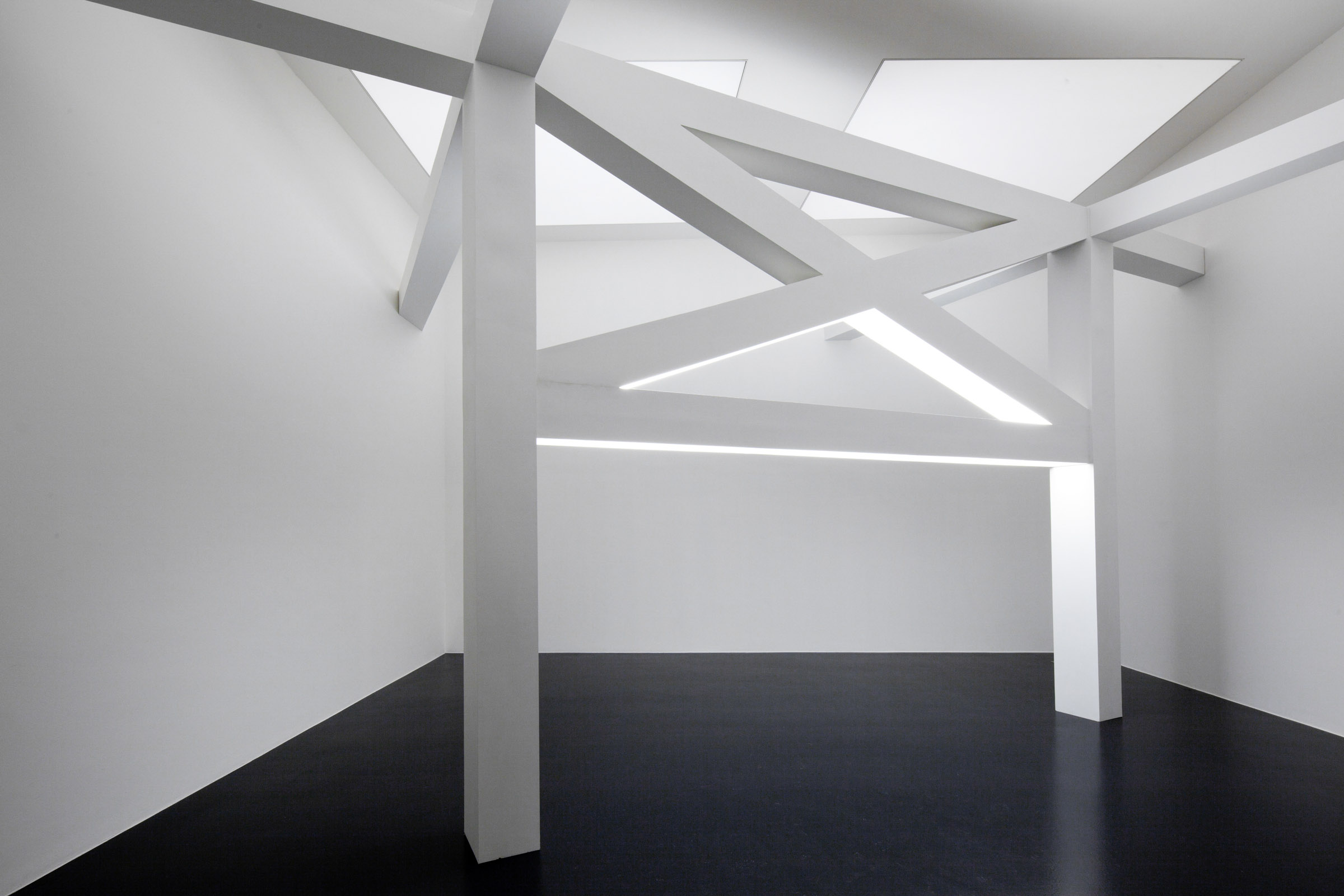Boris Rebetez
L'Espace d'Après

FEB 17 2012 – MAR 10 2012
von Bartha, S-chanf
The artist’s main interest lies in the various concepts of space, which becomes obvious when analyzing his eclectic work containing drawings, collages, sculptures, installations and photography. Space therefore is not only addressed in terms of spatial surrounding, but also as a theoretical and historical entity. Further, Boris Rebetez understands space as a to be experienced subjectively and to be created mentally. Boris Rebetez’s exhibition at the von Bartha Chesa in S-chanf is his first solo project with the Galerie von Bartha. The work, which the artist made especially for this exhibition, is tied conceptually to the sculpture, which was exhibited in the entrance hall of the Brussels showroom Komplot in 2011. Rebetez continues with this intervention by picking up and responding to the characteristics of the showroom in the Engadin. The monumental wood sculpture fills the white cube of the Chesa. However, it leaves enough space for the visitor to move freely. The sculpture is a structure inside a structure, which again is placed inside another structure. This succession of three autonomous, architectonic or sculptural parts – the outer wall of the former barn, the in these walls embedded white cube and finally the sculpture itself – all of which refer to each other, is essential to the effect of the Boris Rebetez’ intervention. The lower part forms a passage, the transitory component of which, in the sense of a sill, is emphasized through lightening on the bottom side of the crossbeam. Per contra to the transitory momentum of the sculpture’s lower part, the upper part appears barricaded. Additional directions of movement emanate from the beam construction on the upper side of the sculpture. While the upper part of the sculpture seems to work against the emptiness and simplicity of the white cube, the lower part, a transit and rite of passage, harmonises with its surrounding. The non hierarchical “on top of each other” of the sculpture creates its own space, while also interacting with the space surrounding it. Due to this simultaneity space can be experienced as a multiformal, factual and spiritual entity.
Error. No content found for Slider